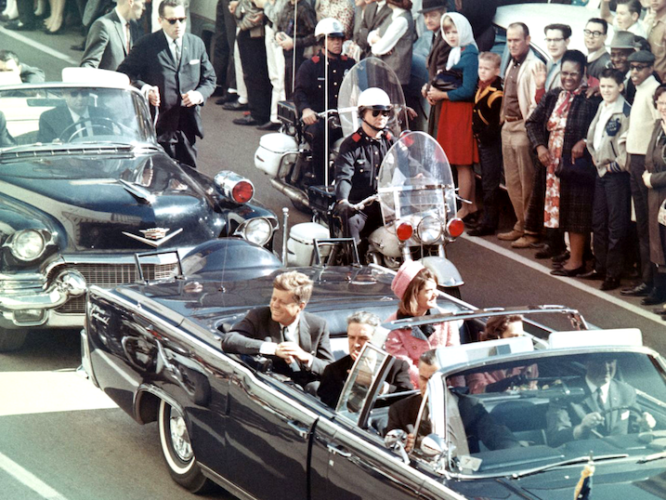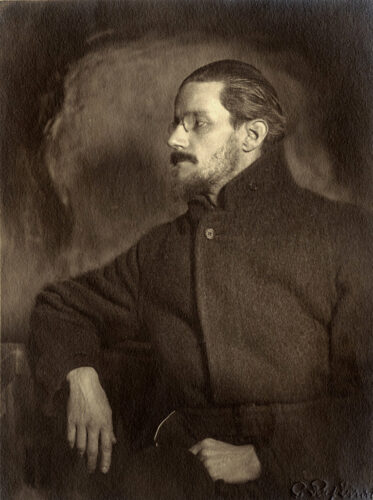IDSG Ep96 Catching Up With Cantwell (and The Failures of the Prison Industrial Complex)
Sines v. Kessler is finally underway, and Christopher Cantwell is representing himself. Need we say more? Actually, yes. And hence, this episode.
Content warnings.
Permalink / Direct Download / Soundcloud
Podcast Notes:
Please consider donating to help us make the show and stay independent. Patrons get exclusive access to one full extra episode a month.
Daniel’s Patreon: https://www.patreon.com/danielharper
Jack’s Patreon: https://www.patreon.com/user?u=4196618
IDSG Twitter: https://twitter.com/idsgpod
Daniel’s Twitter: @danieleharper
Jack’s Twitter: @_Jack_Graham_
IDSG on Apple Podcasts: https://podcasts.apple.com/us/podcast/i-dont-speak-german/id1449848509?ls=1
Show Notes:
Vice News, Charlottesville Race and Terror (https://www.youtube.com/watch?v=RIrcB1sAN8I)
Christopher Cantwell transferred to Communication Management Unit in Marion, IL. (https://twitter.com/socialistdogmom/status/1402292133483196422?s=20)
Pro Se Letter regarding change of address by Christopher Cantwell.(https://storage.courtlistener.com/recap/gov.uscourts.vawd.109120/gov.uscourts.vawd.109120.968.0_1.pdf)
Hilary Sargent coverage of the Cantwell criminal trial at The Informant. (https://www.informant.news/people/1157338-hilary-sargent)
Cantwell Criminal Trial Testimony Day 3 (https://storage.courtlistener.com/recap/gov.uscourts.nhd.53269/gov.uscourts.nhd.53269.118.0.pdf)
Cantwell Criminal Trial Testimony Day 4 (https://storage.courtlistener.com/recap/gov.uscourts.nhd.53269/gov.uscourts.nhd.53269.119.0.pdf)
Jordan Green at Raw Story: ‘Crying Nazi’ Christoper Cantwell is getting legal assist from a white supremacist as he prepares for Charlottesville trial (https://www.rawstory.com/crying-nazi-trial/)
- While serving his sentence, Cantwell met Hale along with another man named William A. White, who has played an even more significant role in helping him prepare for his upcoming trial in Charlottesville. White, in turn, is in prison for soliciting violence against the foreman of the federal jury that convicted Hale. According to the US Justice Department, White created the now defunct Overthrow.com website in the late 2000s as a platform for the American National Socialist Workers Party. He used the website to post derogatory comments and personal information about the jury foreman, including their home address and phone numbers.
- “Anyway, so I run into these guys,” Cantwell told a white supremacist podcaster during an interview last week from an Oklahoma prison where he is awaiting transfer to Charlottesville to stand trial. “And allegations against them notwithstanding, they’re good to me.”
Sines v. Kessler at Courtlistener (https://www.courtlistener.com/docket/6168921/sines-v-kessler/?filed_after=&filed_before=&entry_gte=&entry_lte=&order_by=desc)
Document 1108 (https://storage.courtlistener.com/recap/gov.uscourts.vawd.109120/gov.uscourts.vawd.109120.1108.0.pdf)
- In addition, it has now become apparent that Cantwell, who has been proceeding pro se and has been afforded its corresponding protections and leniency, may be using another inmate, William A. White, to participate in this litigation and “ghost-write” his recent filings. See ECF 1063 at 1 (“Christopher Cantwell … Moves this Court … To Provide Cantwell and his Lay Counsel, William A White, Adequate Access to The Electronic Materials…”); ECF 1063-2; compare ECF 1055 (handwritten filing written largely in first person) with ECF 1063 (typewritten filing written in third person). That provides yet another basis to deny these motions. Ghost writing plainly violates legal rules and only reinforces the inappropriate and harassing nature of Cantwell’s numerous recent filings, including ECF 1062, 1063, 1064, 1065, 1066, 1077, 1078, 1084, 1085, 1086, 1087, 1088, 1089, 1090, 1096, 1097, 1098, 1099, 1102, 1103. See Wojcicki v. SCANA/SCE&G, 947 F.3d 240, 244 (4th Cir. 2020) (“Allowing individuals to represent themselves pro se reflects a respect for the choice of an individual citizen to plead his or her own cause, but so does the bar preventing individuals without legal expertise from representing others.”
“A momentary loss of muscular coordination” (The Shining and abuse)
Originally posted to Patreon on August 22 2020. The original text has been preserved with minimal corrections and changes added for clarity. A spooky All Hallow’s Eve to all.
Content warnings apply.
Stephen King’s The Shining is vexingly sympathetic to axe-murdering alcoholic Jack Torrance. King’s Jack is a guilt-wracked, weakened man who is ultimately broken and consumed by his alcoholism, violent pugnacity, and the Overlook Hotel. The novel frames Jack’s story as the tragedy of a weak man who loses a battle with his fatal vices. Have a read of this passage where Jack lashes out at Wendy for asking about his well-being:

“Jack, are you alright? You look pale—” He snapped his head away from her fingers. “I am fine!” She recoiled from his hot eyes and tried on a smile that was a size too small. “Well… if you are… I’ll just go and wait in the park with Danny…” She was starting away now, her smile dissolving into a bewildered expression of hurt.
He called to her: “Wendy?” She looked back from the foot of the stairs. “What, Jack?” He got up and went over to her. “I’m sorry, babe. I guess I’m really not all right. That machine… the lens is distorted. I’ve got a really bad headache…”
It’s a logical step from Jack belittling and berating his wife to swinging a croquet mallet at her. King writes Jack as feeling guilty for his failings, as if this somehow redeems him or makes him sympathetic (King has that ever-popular style of writing two-dimensional characters downpat — give them a fatal flaw and a virtue and voila, your book has Dramatic Nuance!). This gets into troubling territory, as King attempts to render Jack a sympathetic villain through his own guilt. And, sure, real abusers can sometimes show remorse. It does not inherently endear them to onlookers nor does it reduce the grossness of a spectacle that consists of “woe is me, a poor abuser struggling with my abusiveness!” It’s hard not to read King’s desperation to treat Jack sympathetically as a craven alibi for toxic masculinity, which pays lip service to the harm caused by abusive men but still manages it to center around their pain.
This gets especially messy when King writes Jack as a misanthrope with a loathing for every person he meets. The opening passage of the book explicitly states that he’s a wholly unpleasant bastard:
Jack Torrance thought: Officious little prick. Ullman stood five-five, and when he moved, it was with the prissy speed that seems to be the exclusive domain of all small plump men. The part in his hair was exact, and his dark suit was sober but comforting. I am a man you can bring your problems to, that suit said to the paying customer. To the hired help it spoke more curtly: This had better be good, you.
So much for reading Jack sympathetically. Equally troubling are the lengths to which King has gone emphasizing that Jack is a thinly-veiled cipher for his own alcoholism, as if “but he’s sad that he dislocated his kid’s shoulder!”…
Company Involvement (Book Three, Part 28: JFK, Milligan’s Animal Man)

Previously in The Last War in Albion: The first issue of Shade the Changing Man saw Kathy George attempt to witness the execution of her parents’ murderer, Troy Grenzer, only to have him end up on her back seat claiming to have been possessed by an alien entity, Shade.
“Funny thing, after JFK died in Dallas, lotta crackpots started claiming company involvement. They said a background bum in assassination photographs was Howard Hunt, disguised. They said Jack Ruby, who shot Kennedy’s assassin before he could stand trial, had mafia connections. So he had mob connections. These days, who don’t?” -Alan Moore, Brought to Light
Understandably dubious, Kathy takes Grenzer/Shade to a hotel room, and the story catches up with its beginning. In a development surprising only to people who didn’t read the name of the series, Kathy does not carry through with her plan to murder him, and instead she and Shade find themselves on a road trip tracking some mysterious entity from the Area of Madness known only as the American Scream. The particulars of what this evocative but far from self-explanatory setup became clear over the next two issues, which see Shade and Kathy pulled by the M-Vest into the orbit of a Kennedy conspiracy theorist whose obsessions the American Scream has latched onto and begun amplifying in strange and unexpected ways.
The Kennedy assassination is an event that puts the peculiarities of this era of the War in a strange and sharp relief. In 1990, when Milligan tackled the topic, the assassination was still less than thirty years ago—more recent than the comics themselves. And yet by the early 21st century the assassination of JFK would come to feel like strangely ancient history. Some of this, unquestionably, is due to the events of the early 21st century and the way in which September 11th, 2001 would supplant November 22nd, 1963 as a transformative date in American history ensnared by a web of conspiracy theories. But it also comes down to Kennedy himself. In 1990 he would have been an elderly man, but in no way too old to still be a prominent figure in American public life; then-President George H.W. Bush was only seven years younger than Kennedy would have been, and Reagan, out of office just three years, was six years older. His brother was still a US Senator. But in the decades that followed the living connections to JFK dwindled. Jackie Kennedy died in 1994, JFK Jr. In a fatal plane crash in 1999, Ted Kennedy a decade later. People who vividly remember the Kennedy assassination will stick around for a while yet, but already it’s become something that happened in people’s childhoods; in a few decades it will slip entirely from living memory.
In 1990, however, the assassination remained firmly relevant. Oliver Stone’s film JFK was a year away from theaters, while the books it was based on had come out the two years prior. In many ways, this was the height of the assassination’s pop culture relevance.…
IDSG 95 James Lindsay and the Grievance Studies Hoax, Part 2
Yes, we’re back with Jimmy Concepts, reliable source of dishonest idiocy. This time, as a kind of ‘bonus feature’ to our last episode, Daniel reads out a representative selection of reviewer comments on some of the fake papers submitted to academic journals by Lindsay, Pluckrose and Boghossian during the so-called ‘Sokal Squared’ prank. It’s very revealing… albeit of something we already knew: namely that Lindsay and his cohorts are absolutely full of shit.
Content Warnings.
Direct Download / Permalink / Soundcloud
Oh, and here’s Part 1 (ep94) again: https://idontspeakgerman.libsyn.com/94-james-lindsay-and-the-grievance-studies-hoax
Podcast Notes:
Please consider donating to help us make the show and stay independent. Patrons get exclusive access to one full extra episode a month.
Daniel’s Patreon: https://www.patreon.com/danielharper
Jack’s Patreon: https://www.patreon.com/user?u=4196618
IDSG Twitter: https://twitter.com/idsgpod
Daniel’s Twitter: @danieleharper
Jack’s Twitter: @_Jack_Graham_
IDSG on Apple Podcasts: https://podcasts.apple.com/us/podcast/i-dont-speak-german/id1449848509?ls=1
Show Notes for 95:
Areo Magazine, Academic Grievance Studies and the Corruption of Scholarship ( https://areomagazine.com/2018/10/02/academic-grievance-studies-and-the-corruption-of-scholarship/ )
Full listing of Grievance Studies Papers and Reviews ( https://drive.google.com/drive/folders/19tBy_fVlYIHTxxjuVMFxh4pqLHM_en18 ).
“BJ-Gay” reviewer’s comment:
– This paper claims to apply a combination of psychoanalysis and feminism to examine and critique
styles of masculinity evident within grappling-based martial arts subcultures. Overall, I found the
paper very difficult to read and cannot recommend it for publication. This is due to a combination of factors, namely:
– A densely theoretical, often confusing style of prose in many parts of the paper;
– An inconsistent application of theoretical concepts, most of which were not defined with any
clarity for the reader;
– Overuse of certain source material, as well as a fairly consistent tendency to misuse sources in
support of claims that the papers/books in question do not actually support;
– Many sweeping generalizations about (all) men involved in (all) grappling-based martial arts;
– A tokenistic inclusion of discussions of women in these spaces, which was not reconciled with the analysis in any meaningful way;
– A central thesis which is not, to my knowledge, supported by any of the empirical research in this area (despite the fact that several such studies were cited in the paper);
– Bizarre, even farcical concluding recommendations which indicate a lack of knowledge about the martial arts in question, as well as a tenuous and selective grasp of feminism as applied to sport.
– There is simply too much wrong with the paper to offer a more robust criticism as a reviewer. I recommend that the author spends far more time acquainting themselves with both the theoretical and empirical literature at the intersection of sport, martial arts and masculinity studies before attempting a re-write. The current offering sits far short of the standards of scholarship expected of academic publication, particularly in a journal such as Men and Masculinities.
Human Bondage: The Man with the Golden Gun ft. Elliot Chapman
Hello all! James Bond has indeed returned, this time in Human Bondage‘s discussion of The Man With the Golden Gun, where Roger Moore, armed only with a Walther PPK, spurs with Christopher Lee’s third nipple. Elliot Chapman is our guest this month, and as always he’s dazzling and charming and enchanting, and bafflingly willing to put up with our nonsense. We’ve got a great show for you, as always, and as always HUMAN BONDAGE WILL RETURN.…
Anything Nasty About The Sicilians (Book Three, Part 27: Skreemer, Shade the Changing Man)

Previously in The Last War in Albion: Peter Milligan made a name for himself in the British market through a series of collaborations with Brendan McCarthy, most notably the banned-from-Crisis comic Skin, about a skinhead thalidomide baby.
“They gave him a silver coffin. They walked behind his coffin, with the Irishers, and Al himself paid for five thousand dollars’ worth of flowers! And after that, if anybody said anything nasty about the Sicilians they said it quiet, and they said it where nobody could hear them talking.” -Neil Gaiman, Violent Cases
It is not entirely clear when Milligan was first tapped by DC. Notably, and unlike other combatants in this phase of the War, DC was not his entrypoint to the American market; he’d published Strange Days with Eclipse back in 1984, and subsequently put out The Johnny Nemo Magazine with them and Paradax with Canadian publisher Vortex Comics. This would have surely meant he was on Berger and Giordano’s radar by the time of the famed February 1987 trip to the UK, where they no doubt met with more writers than just Morrison and Gaiman. In a 1993 interview Milligan described how DC “were asking me to work for the, so I wasn’t going to them. They were phoning up saying ‘Peter you should write something for us. You should do a mini-series, you should do an ongoing series.’” This isn’t entirely incompatible with the idea that Milligan pitched back in February 1987, but it’s notable that his first work for DC, Skreemer, while still a “for mature readers” book edited by Karen Berger in the same basic style as her other imports, did not debut until mid-1989, well after Morrison and Gaiman’s debuts.
But Skreemer stands apart from other first projects by UK imports in other ways as well. Morrison and Gaiman’s first projects were both done according to a very specific template: take an obscure DC character and revamp them, broadly speaking, the same way Alan Moore did Swamp Thing. Even Gaiman’s second project, Sandman, was explicitly set in the DC Universe and at least vaguely connected to an old vintage property. Skreemer, on the other hand, was a standalone miniseries outside of DC continuity. This is always a tougher sell, and to attempt it as a new creator without a proven track record is either an act of hubris or sheer perversity.
This sense continued with the actual content of Skreemer—a violent sci-fi gangster comic told non-linearly and jumping freely among multiple timelines with little indication of sequencing saved for a desaturated color palate on the flashback sequences. This was, in other words, a difficult book. Milligan hs joked that DC “were all keen for writers to be themselves. As long as you were exactly like Alan Moore,” but he was notable as the only one of the initial wave to handle this mandate by trying to work with the structural and narrative techniques of Watchmen, weaving a narrative connected by visual and symbolic transitions as much as by straightforward narrative causality.…
No Time to Die Review
Spoilers, sorry.

As I said on Twitter, that was more or less the shambolic hoot I had hoped for. A rollicking, incoherent, dumb, infuriating, joyful, and exhilarating mess. Fukunaga, Craig, et al identify and transmit the pleasures of Bond films while gesturing at bolder things, and sometimes even clutching them, while grounding their work in the mindless but alluring celebration of British imperialist surveillance and sabotage that Bond and Fleming embody. In short, it’s a James Bond movie, with all the delights and vices that epitomizes.
The heart of that agony and ecstasy is the departure of Daniel Craig, whose meaning and impact on future movies any review of No Time to Die worth its salt has to decrypt. Craig has crafted self-evidently cinema’s finest James Bond portrayal, constantly asking “what if this character were actually a human being?” and being personally responsible for much of the character’s story (Craig has co-producer credits on Spectre and No Time to Die, and apparently had greater creative control of his last Bond film). The films that have resulted have been a strange and often poorly fused mess of differing filmmaking styles and aesthetic values, but with a brilliant lead actor at their center crafting a compellingly fucked up character out of one of the most oversignified characters in cinema.
Naturally Craig’s departure is celebratory, buying that James Bond is a good thing for the world, so that his departure is sad yet triumphant. His imperialist project is accordingly celebrated, with some repudiation of Bond’s earlier rape culture tendencies in the form of neoliberal feminism (James Bond enforces manufactured consent. Shocking. Positively shocking). Ideological coherence is largely irrelevant to this; after five movies, Craig’s departure is deeply moving.
And the movie sells Craig’s departure shockingly well. There are appropriate callbacks to previous movies, particularly Casino Royale and On Her Majesty’s Secret Service. Fukunaga seems to have taken inspiration from the “grounded/down-to-earth” Bonds (the ones where Bond gets a few scratches from explosions rather than none at all). In tying itself to Casino Royale and OHMSS (still the unruliest title ever) through callbacks to Vesper and several OHMSS soundtrack cues, No Time to Die plugs itself into the tradition of movies that traumatize Bond. Some early scenes made me think the movie was headed towards a Casino Royale/Quantum of Solace-esque characterization of Bond as a fucked up, neurotic mass of flesh, booze, and thanatos. That tendency dissipates as the movie progresses, with mixed results; depending on the scene, Bond is either a tender man seeking redemption or a stone-cold assassin. The two aren’t irreconcilable (I say this as someone who has in the past experienced personal kindness from high-profile members of the fucking Iraq Survey Group), and Craig sells both, but the rewrites, delays, and sheer number of writers who contributed to this script are felt heavily.
And yet the discordance does the movie some favors. For one thing, it deemphasizes Bond in his own movie; the opening scene (at least after the gunbarrel shot, Craig’s only gunbarrel to kickstart a movie) and the ending both center Léa Seydoux’s Madeleine Swann, who the movie salvages into an actual character with interiority and commonalities with Bond after her role in Spectre as “Bond girl whose dad Bond shot and kidnapped 2-3 movies ago”.…
Husks (Book Three, Part 26: Insiders, Skin)

If you enjoy Last War in Albion, you might also enjoy my new comic series Britain a Prophecy, which is so overtly in the same tradition of 80s/90s British comics that I even called the first arc The Last War in Albion. The first issue is available on a free/pay what you want basis.
Previously in The Last War in Albion: Garth Ennis exemplified a tension within the British comics scene of the period, oscillating between strong political investments and vapid edgelording. The latter aesthetic, however, was exemplified by Mark Millar.
The qlippoths are generally understood as hells, although the word means husks or shells. It’s what remains once the sacred energy in things has departed. The sacred energy is meaning. When the meaning of a thing moves on, that thing becomes a husk. -Alan Moore, Promethea
Millar made his Fleetway debut late in the run of Crisis and Revolver. His first such effort, a one-off called “Her Parents” in Crisis #31, is a curious thing; the story of a boy enduring the attentions of his date’s parents while waiting for her to finish getting ready. It is essentially a comedy about how desperately unpleasant the parents are—bellicose, bigoted, and obsessed with football. The story does not really have a plot—it simply ends when his date finally comes down with no real reveal or resolution, as though the sole point had been to tarry in the unpleasant space of the parents’ living room for the sake of being there. Another strip, in the Revolver Horror Special, takes a similar general approach, following a sexist asshole named Brian who’s obviously obsessed with his mother before an ending reveal that his mother is an emaciated figure handcuffed to the bed so that he never has to leave her. This at least has something resembling a plot—there’s a reveal at the end that pays off and shades what came before instead of just “the person he was waiting for comes downstairs.” But the overall point is still simply to depict the unpleasantness, not to mock it or satirize it as Garth Ennis does, but simply because misogyny and homophobia are viewed as worth spending time with.
The picture becomes clearer when you look at Millar’s longer works of the period. His professional debut was a series called Saviour that managed six issues at Trident before the company went bankrupt, the first drawn by Daniel Vallely, the rest by Nigel Kitching. It is undoubtedly an ambitious comic, weaving a vast mythology about a superhero named Saviour (modeled after television presenter Jonathan Ross, an early example of Millar’s ruthless savviness in attention-getting decisions) who presents himself as a messiah figure but is in actuality the antichrist. But there is also the same fascination with ugliness—a plotline about a young girl being sexually abused that spends all of its time on her terror and confusion, or a sequence that revels in Desmond Tutu being shot in the head. His other Trident series, Shadowmen, which saw two of a planned six issues published before the company went under, has a similar focus on gruesome violence, the bulk of it against women, lingering over things like an extended sequence of state violence being enacted against two women as an intimidation campaign, ending in one of their murder or a scene in which a female police officer is mind controlled into shooting first her fellow officers then herself by a man who keeps calling her “honey” while forcing her to do it.…
Britain a Prophecy #1

I am very, very pleased to announce the release of Britain a Prophecy #1, the first issue in the ongoing comic series I’m creating with Penn Wiggins. It’s an urban fantasy comic set in 1980s Britain—a love letter to the classic Vertigo tradition with a modern spin and a queer perspective.
We’re currently distributing it on Gumroad on a free/pay what you want model, so you can go check it out at no cost if you want to.
If you like it and want to support further production of the comic, we fund it on Patreon and are, to be honest, still a solid $150 or so short of where the comic is straightforwardly financially viable to make. For just $5 a month you can get behind the scenes looks and digital copies of all of the issues as we create them.
But even if you can’t afford to support us, I hope you’ll check out the first issue. This is the most fun I’ve had creating something since Neoreaction a Basilisk, and I think it’s some of my best work. And Penn and our colorist Nechama Frier are doing absolutely stunning work on the art.
And if nothing else, I promise you’re going to love the final page.…
